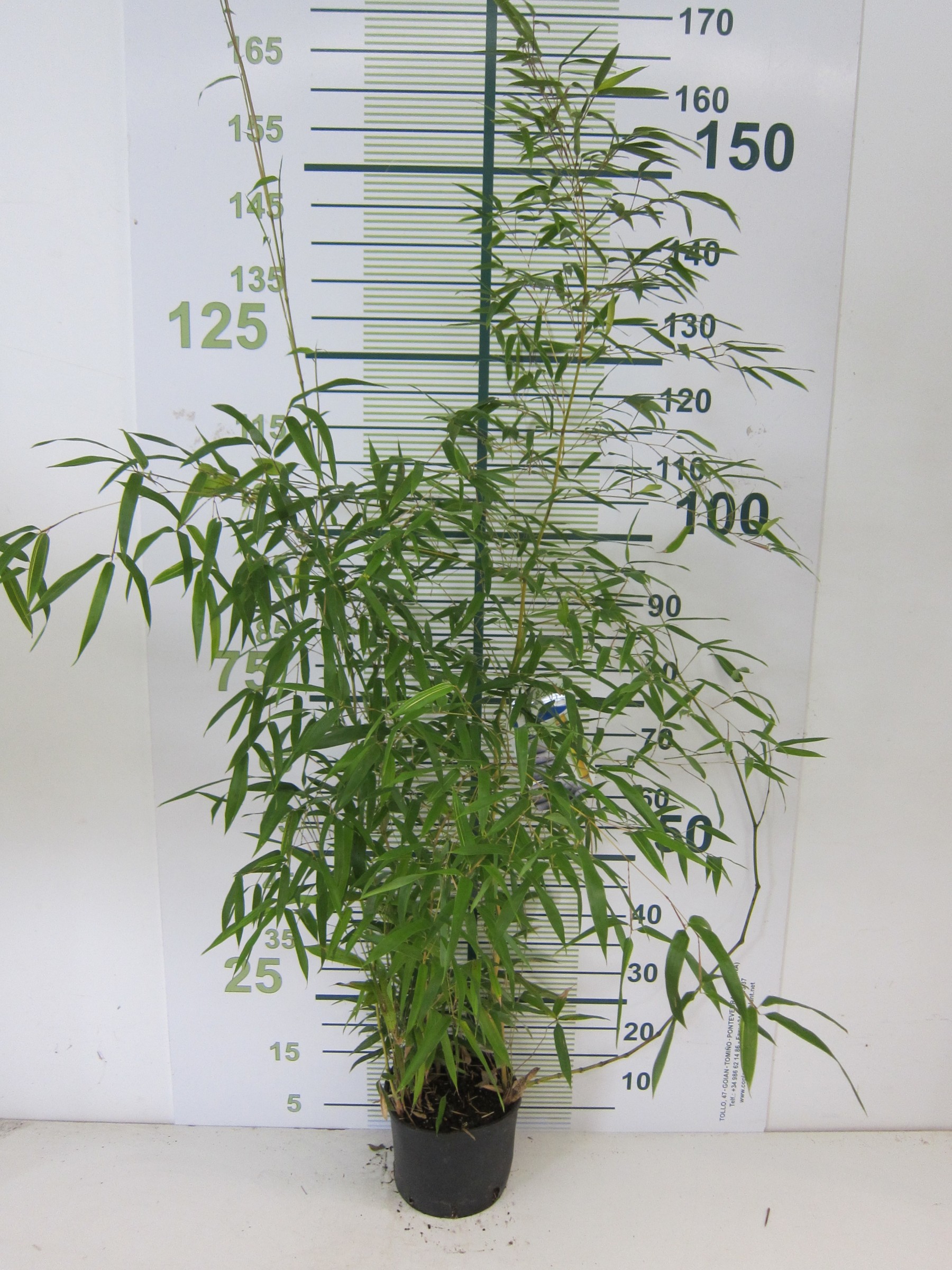
Phyllostachys aureosulcata "Aureocaulis" 5L 34 100/150
Phyllostachys aureosulcata 'Aureocaulis' The caramel-coloured stems of this bamboo add interest to the Winter Garden. The term bamboo applies to several genera of woody-caned, perennials from tropical and sub-tropical zones belonging to the Poaceae (grass family).
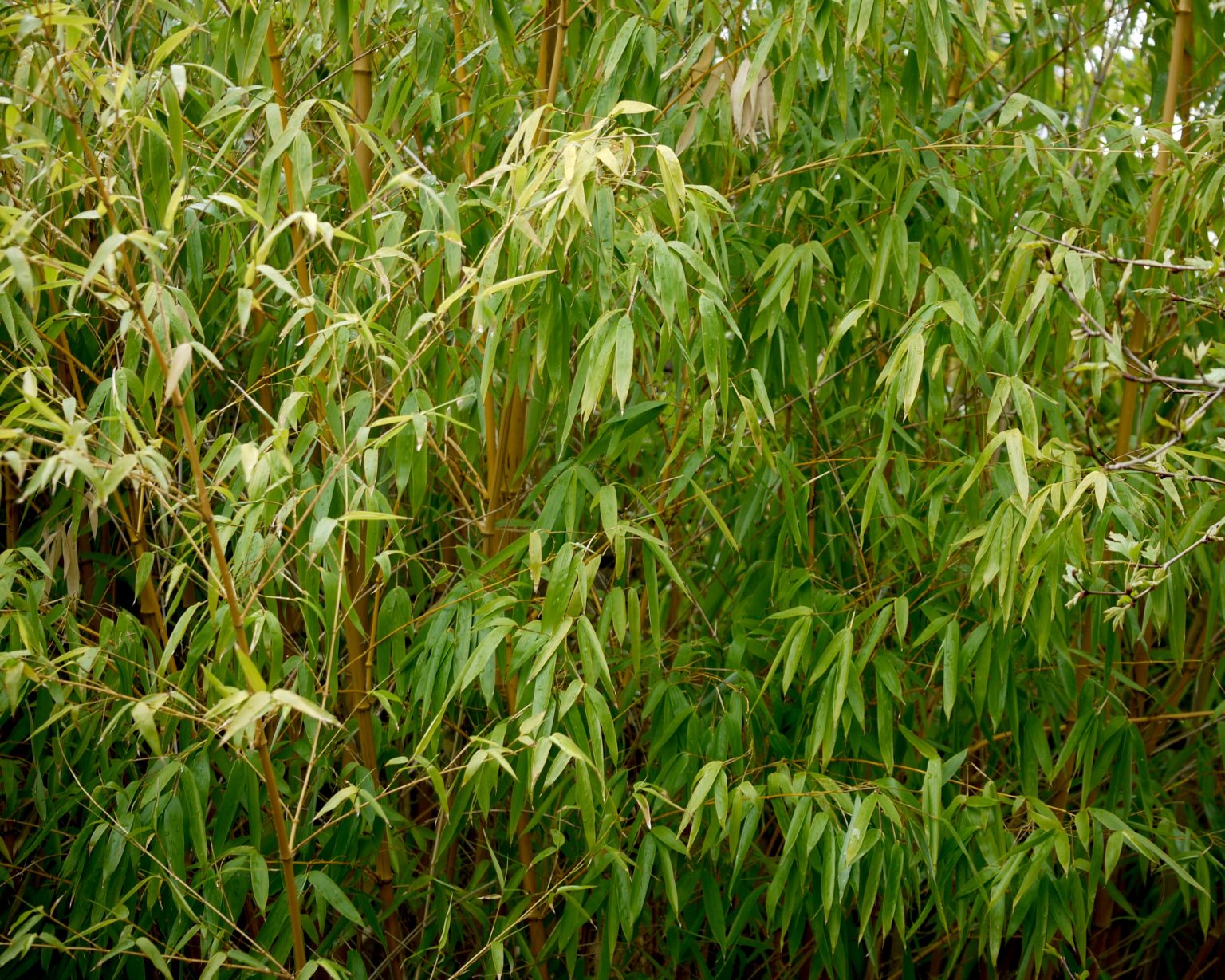
Phyllostachys aureosulcata Aureocaulis Mount Venus Nursery
The 'Aureocaulis' cultivar is the hardiest golden-caned bamboos. The culms of this cultivar take on a lemon yellow colour at sheath fall, the time when the new shoots reach their full height in late spring. If positioned in full-sun the golden culms of aureosulcata will become lightly tinged with colour, the hue depending on the cultivar.

Phyllostachys aureosulcata f. aureocaulis BBC Gardeners World Magazine
Phyllostachys aureosulcata 'Aureocaulis' or Aureocaulis Yellow Groove Bamboo is the hardiest bamboo with yellow culms. The culms emerge reddish yellow and beautiful, bright golden yellow as they age. Their tall, upright habit make them great for screens. Yellow Groove Bamboo reaches its mature high in approx. 5 to 10 years.

Phyllostachys aureosulcata aureocaulis Newfi Bambou
This datasheet on Phyllostachys aureosulcata covers Identity, Overview, Distribution, Dispersal, Diagnosis, Biology & Ecology, Environmental Requirements, Impacts, Uses, Prevention/Control, Further Information. Identity Preferred Scientific Name Phyllostachys aureosulcata McClure Preferred Common Name yellow groove bamboo Other Scientific Names
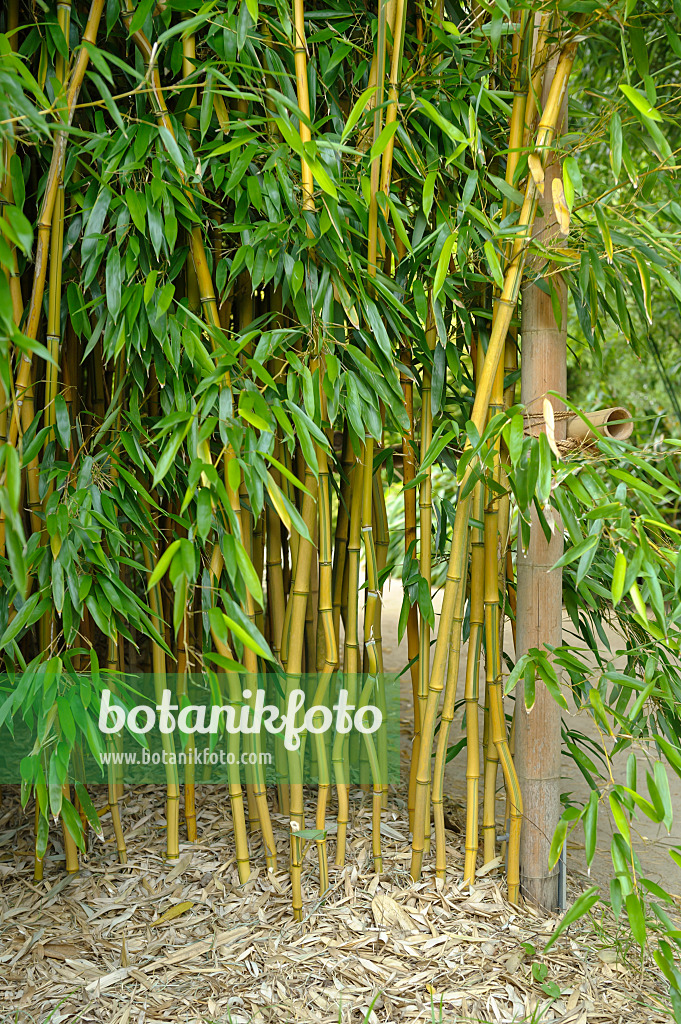
Image Bamboo (Phyllostachys aureosulcata 'Aureocaulis') 517071 Images of Plants and Gardens
Genus: Phyllostachys Species: aureosulcata f. aureocaulis Skill Level: Beginner Exposure: Partial shade Hardiness: Hardy Soil type: Clay/heavy, Moist Height: 240cm Spread: 300cm This.
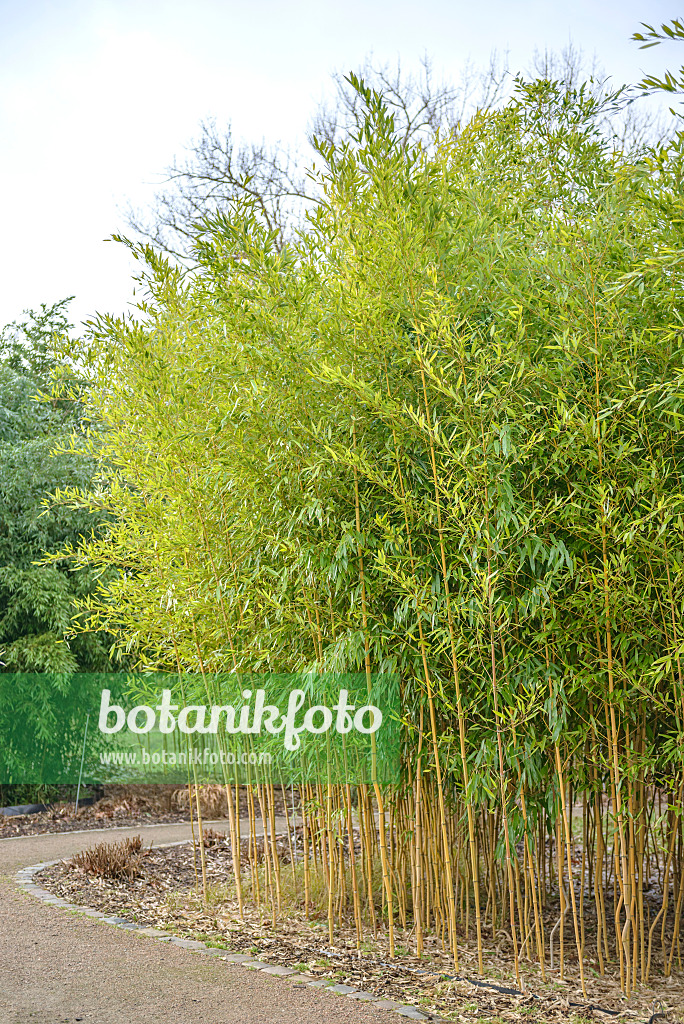
Image Bamboo (Phyllostachys aureosulcata 'Aureocaulis') 547215 Images of Plants and Gardens
Virtually pest and disease free. Deer are generally not problematic. Remove weak, dead, damaged, or spindly stems in spring and thin to show off stems to best effect. Cut out any flowering shoots promptly to discourage more from forming. Propagate by division in spring. Native to temperate Asia.

Buy yellowgroove bamboo Phyllostachys aureosulcata f. aureocaulis £49.99 Delivery by Crocus
Free Shipping Available. Buy Phylostachys Aureosulcata on ebay. Money Back Guarantee!
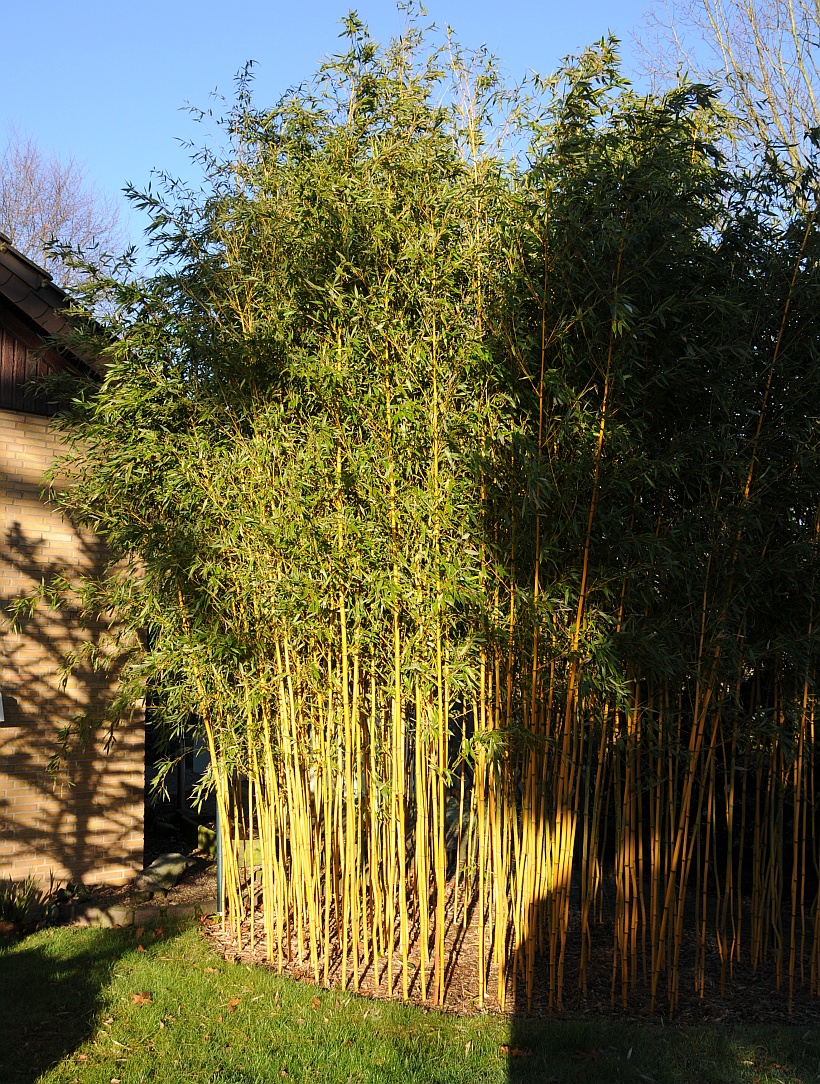
Phyllostachys aureosulcata aureocaulis im Freiland Frostharter Goldener Peking Bambus
Phyllostachys aureosulcata, commonly called yellow-groove bamboo, is a running bamboo that is named for the yellow sulcis or groove that appears on culm internodes. Yellow grooves are particularly showy on new culms. Culms are green. Culms grow upright to as much as 25-30' tall with 2" diameter.

Phyllostachys aureosulcata 'Aureocaulis', Bambus 'Aureocaulis'
Phyllostachys aureosulcata 'Aureocaulis' Golden Crookstem Bamboo. Max/Avg Height (ft.): 30, 25. Diameter: 2 inches. Hardiness: -10° F. USDA Zones: 5-10. Email Us. The culms are a beautiful lemon yellow color at sheath fall (this is the time when the new shoots reach their full height in late spring). When planted where direct sun can shine on.

Bambou moyen Phyllostachys aureosulcata 'Aureocaulis' Plantes et Jardins
Golden bamboo ( Phyllostachys aurea) is a perennial "running bamboo" that is also sometimes referred to as fish-pole bamboo. Fast-growing and able to reach over 20 feet in height, it's a popular choice for providing dramatic ornamental interest or for creating a living privacy screen or noise barrier.
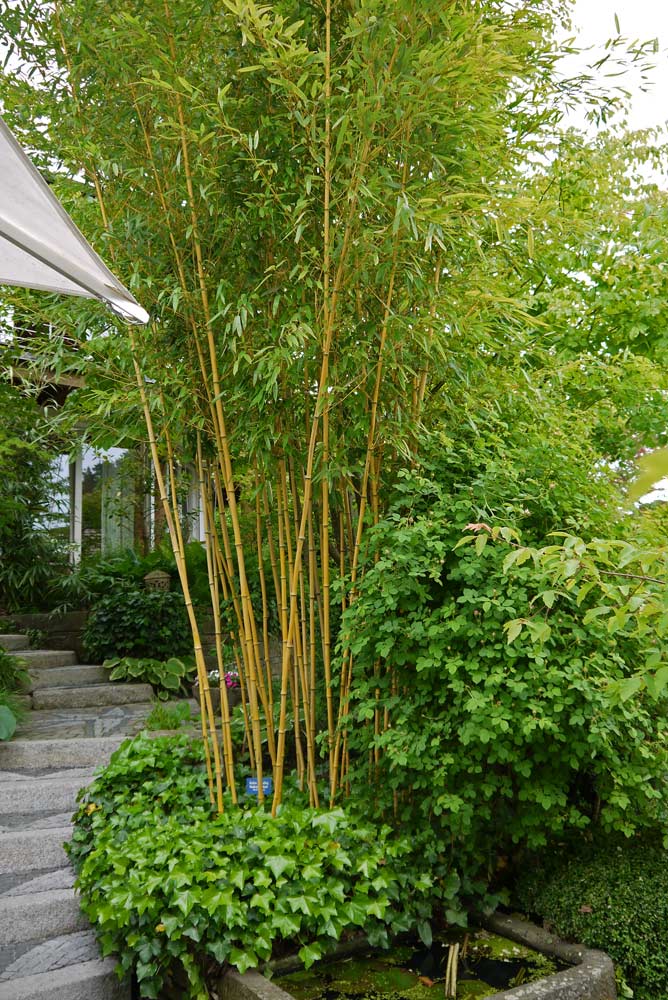
Phyllostachys aureosulcata Aureocaulis Bambuswald
East facing. West facing. Plant match details will appear here. Exposure. Sheltered. Plant match details will appear here. P. aureosulcata f. aureocaulis is a clump-forming, evergreen bamboo with narrow, lance-shaped, mid-green leaves and yellow canes with green stripes near the base.
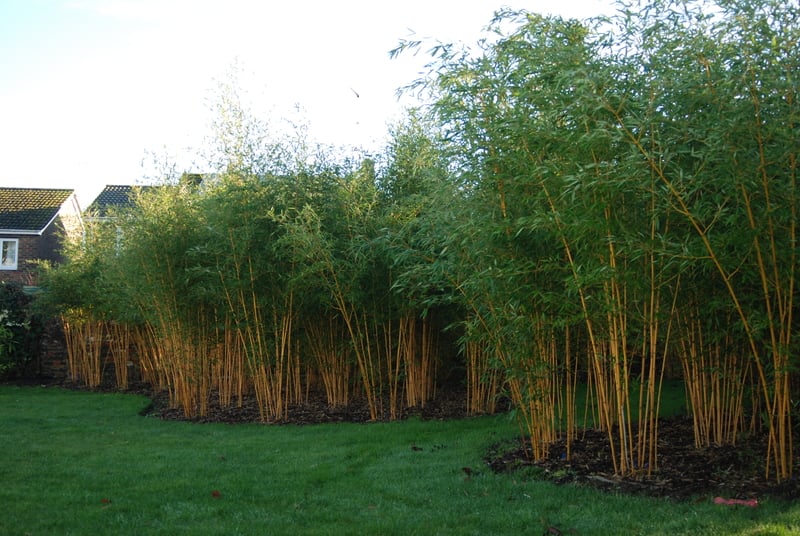
Phyllostachys aureosulcata 'Aureocaulis' Architectural Plants
Description Yellow groove bamboo is a running type of bamboo with very invasive tendencies. It has a yellow strip up its 2" culms. This plant is an invasive species and should not be planted. It is possible for some bamboo to grow upwards of three feet in a single day.

Phyllostachys Aureosulcata Aureocaulis Bambou Rezo Plant
Ph. aureocaulis easily handles full Western Washington sun, is tolerant of drought and evergreen throughout winter with dark green leaves. The "crookstem" nickname is homage to the random (and fairly uncommon) zig-zag canes that emerge amongst the rest of the upright growing canes in Spring.
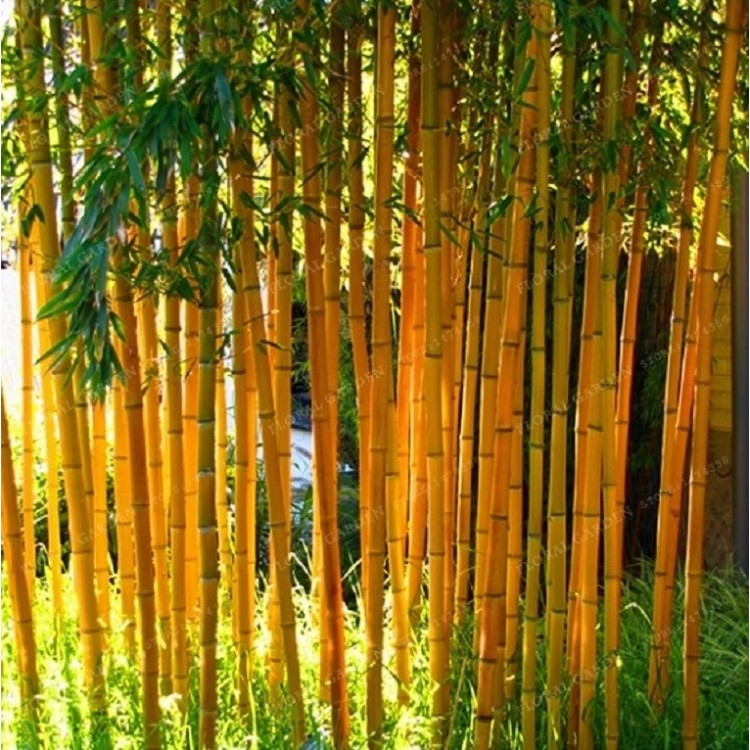
Phyllostachys Aureosulcata Aureocaulis Για ψηλούς φυτικούς φράκτες
Virtually pest and disease free. Deer are generally not problematic. Remove weak, dead, damaged or spindly stems in spring and thin to show off stems to best effect. Cut out any flowering shoots promptly to discourage more from forming. Propagate by division in spring. Native to China
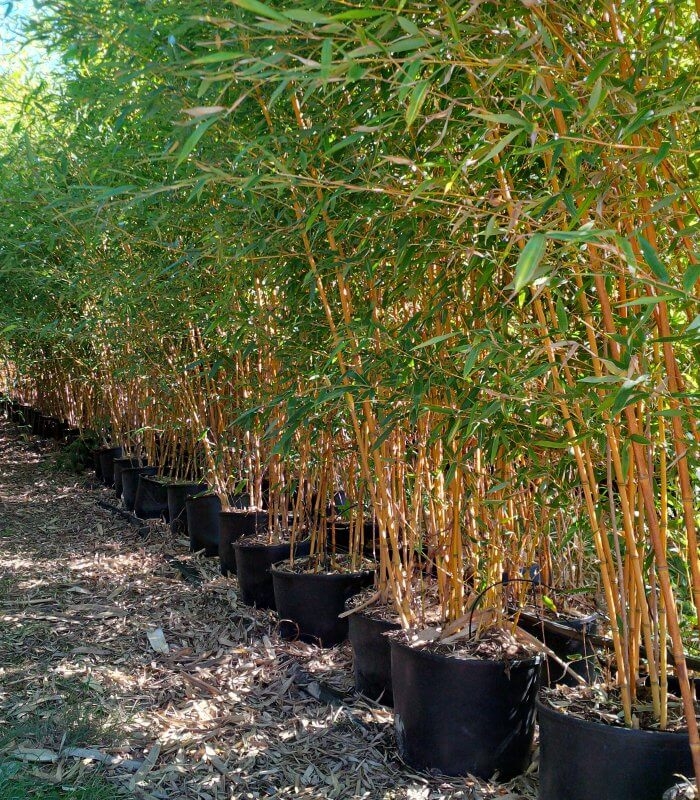
Phyllostachys Aureosulcata f. Aureocaulis
Phyllostachys aureosulcata, the yellow groove bamboo, is a species of bamboo native to the Zhejiang Province of China. It is a running bamboo with a distinctive yellow stripe in the culm groove (or sulcus) that is often grown as an ornamental. [1] [2] Description
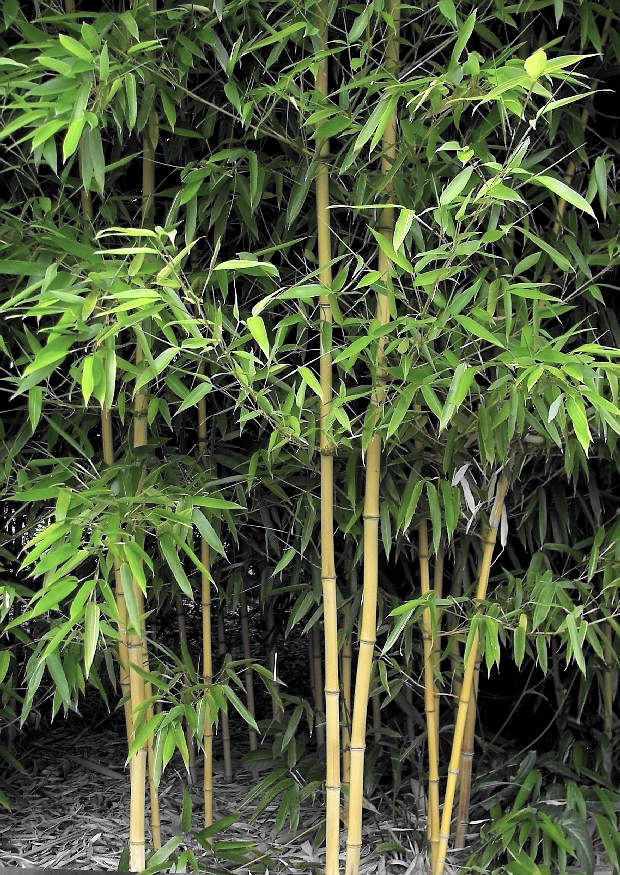
Phyllostachys aureosulcata 'Aureocaulis' Goldener PekingBambus ) gelbes Bambusrohr
Phyllostachys aureosulcata f. aureocaulis golden groove bamboo 'Aureocaulis' A bamboo with pale, golden-yellow canes to 5m or more, reddish when young, sometimes striped with green near the base, bearing lance-shaped mid-green leaves Other common names yellow-groove bamboo Synonyms Phyllostachys aureosulcata 'Aureocaulis' Phyllostachys aureocaulis